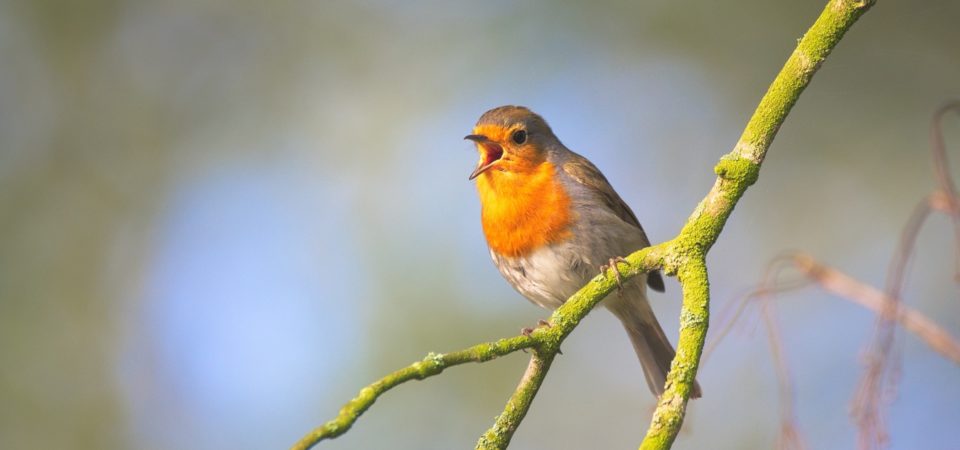The original article appeared first at Earthtongues on May 4, 2022
It’s the evening of 3 November 2016, and the journalist John Laurenson is informing listeners to BBC Radio 4’s World Tonight of a population in serious decline in France. Following year-on-year decreases, he explains, numbers have fallen to roughly half of what they had been thirty years earlier.
The population to which Laurenson is referring is participants in hunting and trapping (hereafter, just hunting): “an old French tradition is under threat,” he observes. He presents an example of this slowly waning heritage—the work of a huntsman whom he had accompanied on an outing in France—in a way that leaves little doubt as to his taste for such killing:
His dog puts up a partridge. He aims, fires and brings it down. It struggles on the ground for a moment before his dog finishes it off and brings it to its master. A beautiful bird. Still warm.
Further developing the appeal to tradition, Laurenson notes that the ‘glory’ in the title of Marcel Pagnol’s La Gloire de Mon Père was a pair of rock partridges, that Guy de Maupassant and Albert Camus both “wrote enthusiastically about hunting,” and that the right of common people to hunt was “the first won from the nobility by the French Revolution.”
How strong is the argument above? Well, the people of France themselves are not convinced. In a 2021 Ipsos poll of French citizens aged between 16 and 75, only 58% of participants considered hunting—or la chasse—to be a part of their nation’s cultural heritage. Moreover, just one in five respondents described themselves as being completely or somewhat in favour of the practice. In contrast, 26% said that they were completely against hunting and another 25% answered that they were somewhat against it. In other words, for every two supporters of la chasse in France, there are five opponents.
Unpacking the heritage of hunting—and showing how the partridge’s fate, while distressing, was less grim than that of many other birds killed in France—will help make it clear why levels of support among the French public are so low. Beyond dog-assisted shooting, the tradition embraces a variety of trapping and killing methods that are soul-mangling in their barbarism.
Glue-trap hunting is one example. Here an adhesive such as birdlime is applied to tree branches in order to snare live songbirds. Once caught, these creatures are caged so that their singing might lure other birds to the site, who, in turn, are shot at by hunters. While the adhesive is cleaned off and the caged birds are supposedly released later, they often suffer grave physical injuries to add to the mental torment inflicted upon them. The practice had been banned by European law in 1979, but France declared an exemption via a decree in 1989. Last year, following stalwart campaigning efforts by organizations such as LPO France,* the country’s highest appeals court ruled that the exemption was in breach of European legislation. The legal wrangling centred not on cruelty, though, but on the technique’s inadequate selectivity.
A second example is stone-crush trapping. The Committee Against Bird Slaughter, in describing the technique, notes that a stone slab weighing between three and ten kilograms is propped up with small sticks and baited with fresh berries. In attempting to retrieve the food, birds inadvertently nudge the sticks and are met by the stone’s crushing weight. Many victims are not killed instantly and instead die from suffocation, blood loss, hypothermia, or thirst. Having previously been outlawed, this method was re-legalized in France in 2005.
Other techniques permitted in the country under legislative exemptions are the trapping of flocks with vast nets and the throttling of individual birds with wire nooses. Furthermore, many species suffering steep declines in numbers remain ‘fair game’—to borrow a hideous term.
Another appalling practice that has been carried out legally as part of the heritage surrounding hunting in France is the capture and horrifying mistreatment of ortolan buntings. In this tradition, caught individuals are kept in a small container, where an inflicted state of darkness—achieved by blinding the birds or using a cover—is said to trigger a gorging reaction that leads to gross increases in their size. Once the birds’ captors are satisfied that their prisoners have become sufficiently fat, they kill them by drowning them in brandy before cooking them. The hunting of these birds was outlawed in France in 1999, but the practice has continued under the blessing of local authorities. In a 2019 article in Current Biology titled “Hunting wildlife to extinction”, Michael Gross notes that this tolerance has led to the ban being violated hundreds of thousands of times. Every single instance among these represents an act of torture in the name of cultural tradition.
The reality is that, despite strong public opposition, hunting’s ever-thinning guise of heritage still remains robust enough to satisfy many politicians. One notable exception is Nicolas Hulot, the first environment minister of Emmanuel Macron’s inaugural term of presidency, who stood down in 2018 citing inaction on hunting as one of his reasons for quitting the role. Macron, who has just secured a second term as President, claims to be serious about biodiversity, yet he is a strong advocate of la chasse. He attempts to square away this apparent contradiction by propagating the preposterous myth of hunting being beneficial for nature. In doing so he not only sanctions mass cruelty but pushes declining species ever closer to endangerment.
The acts described above, which are legally permitted or politically tolerated in France on the grounds of cultural heritage, are a barbaric disgrace. When it comes to the needs and wellbeing of non-human residents and visitors, the leaders of this republic—one that boasts Liberté, égalité, fraternité as a motto—are as blind as caged buntings.
*Other organizations deserving of a mention for their important efforts to restrict hunting in France include ASPAS (l’Association pour la Protection des Animaux Sauvages), One Voice, and AOC (l’Alliance des Opposants à la Chasse). One of the current initiatives of the last of these is the promotion of aires de quiétude pour la vie sauvage, or safe zones for wildlife.
 Joe Gray is a field naturalist who lives in Great Britain. He is an associate tutor for the Field Studies Council, a wildlife lover, and also Fiction Editor for The Ecological Citizen. His writing spans non-fiction and fiction. The latter he does under the pen name Dewey Dabbar, with some of it being published via an imprint called Impudent Raven. His personal website can be found at https://deepgreen.earth/.
Joe Gray is a field naturalist who lives in Great Britain. He is an associate tutor for the Field Studies Council, a wildlife lover, and also Fiction Editor for The Ecological Citizen. His writing spans non-fiction and fiction. The latter he does under the pen name Dewey Dabbar, with some of it being published via an imprint called Impudent Raven. His personal website can be found at https://deepgreen.earth/.

